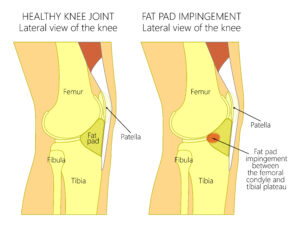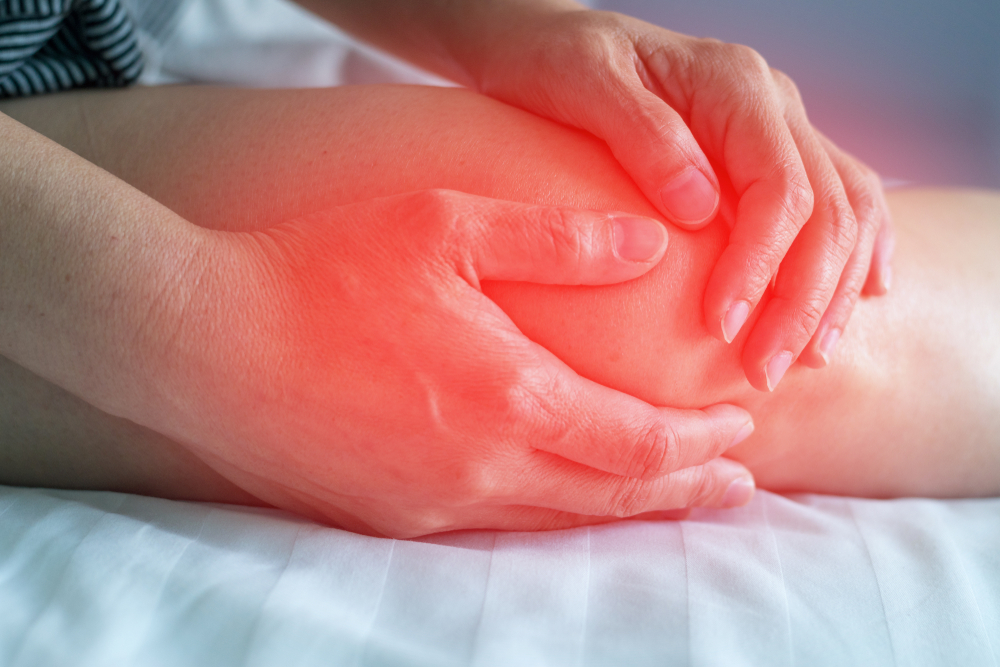Patellofemoral pain syndrome (PFPS) is probably one of the most common types of injuries that we see. Part of the reason I say that is that PFPS is an umbrella term that includes several conditions but also because we will see it more often inactive individuals.
PFPS itself is a condition that affects the patellofemoral joint (knee cap) and the surrounding muscles and ligaments. Patients will typically report experiencing pain in the front of the knee with activities that increase compression of the patellofemoral joint such as going up/downstairs, sitting with bent knees (cinema sign), kneeling and squatting.
Also, Check- https://panthersportsmedicine.com/blog/faq-answered-about-osgood-schlatters-disease/
The problem arises when the knee cap doesn’t sit in the middle of the femoral groves, where it should glide smoothly as we bend and straighten the knee because of articular cartilage and synovial fluid. If the knee cap isn’t positioned properly then it will tend to glide on one side of the femur more than the other, which then leads to overuse or overpressure in that joint leading to pain and irritation.

This change in orientation of the knee cap can be the result of several factors such as overuse of the patellofemoral joint, anatomical abnormalities, muscle weakness, imbalance, or dysfunction.
There are certain structures we find that can become dysfunctional and will result in a deviation of how the knee cap glides. One common scenario is where the Vastus Medialis Obliquus (VMO), which is the teardrop-shaped muscle on the inside of the knee, is weak due to poor knee alignment, previous surgeries (such as an ACL reconstruction), or other factors.
The VMO is the main muscle responsible for pulling the knee cap medially into the joint so when it is weak the Vastus Lateralis (outside quadriceps muscle) will dominate and pull the knee cap laterally, causing additional pressure on the outside of the femur. Tension through the IT band from muscle imbalance around the hip (usually weak hip abductors and hip flexor tightness) can also cause the knee cap the sit more lateral on the femur.
Tightness in the calf and hamstring muscles can also cause a change in knee cap orientation by increasing the amount of pressure on the back of the knee. Foot and ankle alignment also play a huge part in how the kneecap moves. It is through the patient’s complaints and our physical examination we can begin to understand which of these many factors are causing his or her pain.
Treatment for Patellofemoral Pain Syndrome
Physiotherapy is the primary treatment option for many of these causes as they are related to muscle weakness and tightness. Treatment will typically consist of releasing the tight structures (TFL, IT band, hamstrings, calf, etc.) using massage, stretching, active release techniques, or dry needling.
That being said, developing an appropriate exercise program for the patient is the priority when it comes to resolving PFPS. We begin with quadricep strengthening exercises to ensure the kneecap is supported. This will start with exercises where the knee is straight to reduce the pressure on the patellofemoral joint and gradually increased to more functional exercises.
If the patient has a difficult time engaging the VMO muscle correctly with these exercises we can utilize EMS to stimulate the muscle with an electrical current during conservative exercises. From there we continue to address additional muscle imbalances we may find in the hip or ankle which will have an impact on the knee. In cases of repetitive kneecap dislocations or suspected fractures, surgical interventions may be required.





